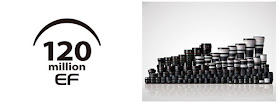 |
| Red-eyed Tree Frog in Costa Rica |
Canon has announced firmware updates for the EOS C100, EOS C100 Mark II, EOS C700, XC10, XC15 and ME20F-SH cameras.
Canon XC10 Firmware Version 1.0.3.0 incorporates the following enhancement.
- Support for CFast cards (VPG130) has been added.*
- *For detailed information about CFast cards that have been verified to work with this camera, please visit Canon’s Web site.
Download Canon XC10 Firmware Version 1.0.3.0
Canon XC15 Firmware Version 1.0.1.0 incorporates the following enhancement.
- Support for CFast cards (VPG130) has been added.*
- *For detailed information about CFast cards that have been verified to work with this camera, please visit Canon’s Web site.
Download Canon XC15 Firmware Version 1.0.1.0
Canon EOS C100 Firmware Version 1.0.8.1.00 incorporates the following correction.
- The following features are enabled when these lenses are attached: CN7x17 KAS S/E1*, CN-E18-80mm T4.4 L IS KAS S or CN20x50 IAS H/E1*3.
- Saving and displaying metadata, such as the model name and the focal distance of the lens attached.
- Support for peripheral illumination Correction.
- Manual Iris control via the camera’s control dial on the grip.
- Zoom operation via the joystick on the camera’s.
- Control of focus, zoom and iris using the separately-sold Remote Controller RC-V100.
- Automatic aperture and push auto iris functions.
- Operation of REC start/stop via the lens’s grip unit.
- *The lens firmware also needs to be updated. If you have CN7x17 KAS S/E1 or CN20x50 IAS H/E1, please contact to Canon Support Center.
Adds Peripheral Illumination Correction for the following lenses :
- EF 35mm f/1.4L II USM
- EF 50mm f/1.8 STM
- EF-S 18-135mm f/3.5-5.6 IS USM
- EF 24-105mm f/4L IS II USM
Download Canon Cinema EOS C100 Firmware Version 1.0.8.1.00
Canon EOS C100 Mark II Firmware Version 1.0.4.1.00 incorporates the following enhancements:
- Shutter Angle Priority has been added. A constant shutter angle can now be maintained, regardless of any other camera settings being changed.
- Support for peripheral illumination correction when the EF 24-105mm f/4L IS II USM lens is attached, has been added.
Download Canon Digital Cinema Camera EOS C100 Mark II Firmware Version 1.0.4.1.00
Canon EOS C700 Firmware Version 1.0.1.1.00 incorporates the following fixe and enhancements:
- Adds the following new recording modes: 4.5K RAW and Apple ProRes in CDX-36150*1
- RAW Format
- Media: Capture Drive 2.0 (Resolution / Max. Frame Rate)
- [4.5K] 4512×2376 / 100 fps
- [4.5K Cinescope] 4512×1920 / 120 fps
- [2K Crop] 2048×1080 / 240 fps- ProRes Format*2
- Media: Capture Drive 2.0 (Resolution / Codec / Max. Frame Rate)
- 4096×2160 / ProRes 422 HQ / 60 fps
- 3846×2160 / ProRes 422 HQ / 60 fps
- 2048×1080 / ProRes 422 HQ / 120 fps
- 2048×1080 / ProRes 4444 XQ / 60 fps
- 2048×1080 / ProRes 4444 / 60 fps
- 1920×1080 / ProRes 422 HQ / 120 fps
- 1920×1080 / ProRes 4444 XQ / 60 fps
- 1920×1080 / ProRes 4444 / 60 fps
- 2048×1080 (Crop) / ProRes 422 HQ / 240 fps
- 1920×1080 (Crop) / ProRes 422 HQ / 240 fps
- Allows CDX-36150 firmware to be updated through the camera menu. *3
- Fixes communications with the Remote Controller RC-V100.
*1 Codex Digital Recorder module.
*2 When you initialize a Capture Drive with the main recording format set to [ProRes (Capture Drive)], the recordable space will be reduced to approximately half of the Capture Drive’s nominal capacity to ensure a highly reliable format thanks to the use of multi-stream processing.
*3 For the latest Firmware Version please check Codex Digital’s website.
Download Canon Digital Cinema Camera EOS C700 / EOS C700 PL Firmware Version 1.0.1.1.00
Canon ME20F-SH Firmware Version 1.0.3.1.00 incorporates the following enhancements.
- The following features are enabled for the CN-E18-80mm and T4.4 L IS KAS S:
- Saving and displaying metadata, such as the model name and the focal distance of the lens when attached.
- Support for Peripheral Illumination Correction.
- Manual Iris control via the camera’s joystick.
- Control of focus, zoom and iris using the separately-sold Remote Controller RC-V100.
- One shot autofocus.
- Automatic aperture and push auto iris functions.
- Operation of REC start/stop by the separately-sold ZSG-C10.
- Three camera modes have been added:
- Tv: Shutter speed is selectable. Iris, Gain and ND Filter* are set automatically.
- Av: Iris is selectable. Shutter speed, Gain and ND Filter* are set automatically.
- AGC: Shutter speed and Iris are selectable. Gain and ND Filter* are set automatically.
- * ND Filter can also be set manually.
- Adds Peripheral Illumination Correction for the following lenses:
- EF 100-400mm f/4.5-5.6L IS II USM
- EF 35mm f/1.4L II USM
- EF 24-105mm f/4L IS II USM
- Adds chroma-key correction function.
- Adds three white balance modes when the camera is set to Auto: custom White Balance Set, Preset and Color temperature.
- Adds 25PsF on output format.
- Adds [59.94P(i)]* and [50.00P(i)]* output setting for Monitor terminal.
- • When the frame rate is set to 59.94P (NTSC) or 50.00P (PAL), the 3G/HD-SDI 1 / MONITOR terminal can be set to output interlaced signal.
- * When using this setting 3G/HD-SDI 2 will output progressive signal.
Download Canon ME20F-SH Firmware Version 1.0.3.1.00




















